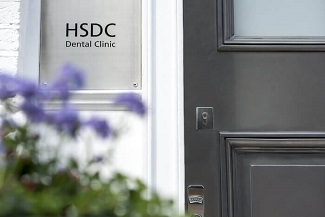Porcelain veneers have been with us since the 1980s and although they have often had their celebrity following, they always have their limitations.

Veneers were often sought out because of the speed of treatment; after measurements, a fitted set of porcelain veneers could have a similar aesthetic effect of years of orthodontic work, but long manufacturing times often slowed down the treatment. Another limitation for cosmetic teams was the bond between the natural tooth and the porcelain veneer. There were many attempts to form the strongest possible bond; these led to etching being applied to the front surface of the tooth and to the back of the porcelain providing a rough texture for which an adhesive could find purchase.
Unfortunately, these techniques thinned and reduced the natural enamel on the tooth and although this was being covered by a layer of porcelain, cavities could form at the base and edge of a veneer and encroach under the veneer, attacking the now weakened front layer of enamel.
Composite bonding
Composite bonding in Harley Street is an attempt to address both of these issues simultaneously. We not only do not etch or remove any enamel during composite bonding but there is no delay time. Whilst composite and bonding may seem very dated, it works via layers of UV cured resin being applied over the teeth. These are set using ultraviolet UV LEDs and built up in layers in a similar manner as gel nails. The UV cured resin is colour matched with a natural opacity in order to imitate enamel. It is tough and stain-resistant but can be carved and shaped using a dental drill through multiple layers of sculpting and re-application. Our skilled dentists can disassemble a facsimile of standard veneers produced in situ in the patient’s mouth!
As you might imagine, this dental procedure skirts the boundary between art and medicine as it relies heavily on the skill competence of the dentist to sculpt a convincing and aesthetically pleasing service. Our dentists have extensive portfolios of successful composite bonding in Harley Street, so if you wish to see proof of work just ask. Such a skill-based procedure warrants caution and we are happy to reassure you of our competence.
By avoiding the need to use a dental laboratory to create a porcelain prosthetic, dental bonding can often be cheaper than their veneer counterparts and when performed correctly, they are indistinguishable. As well as being a nondestructive form of cosmetic dentistry, the use of an in situ veneer can be similar to that of a crown and provide structural support to a damaged tooth or one that has been heavily compromised after fillings or extensive cavities.
Composite bonding in Harley Street is considered a permanent treatment and they have a similar lifespan of approximately 4 years. Reapplication of Institute bondings is far more simple than the reapplication of veneers and can often be done on the same day. For dental advice specific to your situation, you will need to attend a formal assessment by one of our dentists. If you are curious, feel free to get in contact and we would be happy to book you an appointment
